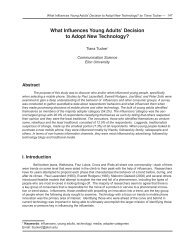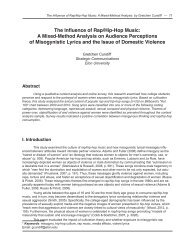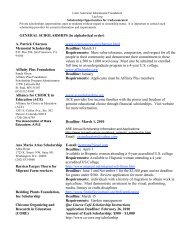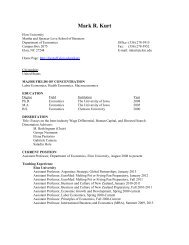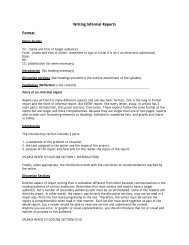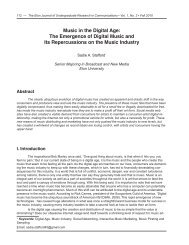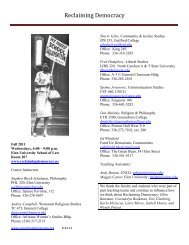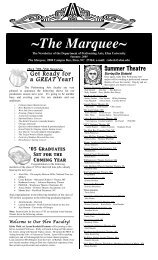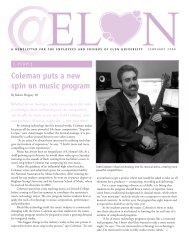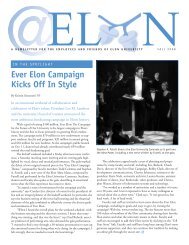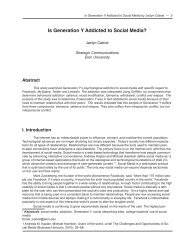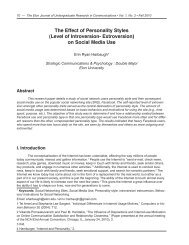In the Supreme Court of the United States In the Supreme Court of ...
In the Supreme Court of the United States In the Supreme Court of ...
In the Supreme Court of the United States In the Supreme Court of ...
Create successful ePaper yourself
Turn your PDF publications into a flip-book with our unique Google optimized e-Paper software.
Here, a reasonable person would believe that <strong>the</strong> Convict and his neighbors nearby were<br />
in danger. An armed burglary had just occurred in <strong>the</strong> Convict’s neighborhood and <strong>the</strong><br />
witnesses’ description <strong>of</strong> <strong>the</strong> burglar matched <strong>the</strong> description <strong>of</strong> <strong>the</strong> person who killed <strong>the</strong><br />
Convict’s neighbor. R. at 5. Fur<strong>the</strong>r, <strong>the</strong> witnesses saw <strong>the</strong> suspect fleeing through <strong>the</strong><br />
neighborhood towards <strong>the</strong> Convict’s house. R. at 5. Unlike <strong>the</strong> <strong>of</strong>ficer in Terry, who had never<br />
seen <strong>the</strong> two suspects before, <strong>the</strong> Officer possessed matching descriptions <strong>of</strong> <strong>the</strong> burglar and<br />
murderer. R. at 5. Additionally, much like <strong>the</strong> experienced <strong>of</strong>ficer in Terry, <strong>the</strong> Officer has been<br />
with <strong>the</strong> police force since at least 2008 and has experience working in this neighborhood. R. at<br />
5. <strong>In</strong> addition, <strong>the</strong> Officer believed <strong>the</strong> threat was dangerous enough that he had to ensure <strong>the</strong><br />
burglar did not break in or take refuge in <strong>the</strong> home. R. at 6. While <strong>the</strong> Convict claimed he had<br />
not heard or seen anything out <strong>of</strong> <strong>the</strong> ordinary, <strong>the</strong> Convict may have ei<strong>the</strong>r been unaware <strong>of</strong> <strong>the</strong><br />
burglar’s presence, or may have been harboring <strong>the</strong> burglar for reasons connected to his known<br />
criminal past. R. at 3–5. The Officer, <strong>the</strong>refore, had reasonable suspicion that <strong>the</strong> burglar might<br />
harm <strong>the</strong> Convict or his neighbors.<br />
3. The Officer limited <strong>the</strong> sweep in scope and duration because <strong>the</strong> Officer looked<br />
briefly into an adjoining room and not into a sensitive area <strong>of</strong> <strong>the</strong> house.<br />
A protective sweep is a “quick and limited search <strong>of</strong> <strong>the</strong> premises.” Buie, 494 U.S.<br />
at 327. During such a sweep, an <strong>of</strong>ficer is permitted to search places within <strong>the</strong> house that a<br />
dangerous person may be hiding. Id. <strong>In</strong> addition, an <strong>of</strong>ficer may search until he “dispel[s] <strong>the</strong><br />
reasonable suspicion <strong>of</strong> danger.” Id. at 335.<br />
The circuits have broadly interpreted <strong>the</strong> places where a person may be hiding. See, e.g.,<br />
Gould, 364 F.3d at 589. For example, in Gould, <strong>the</strong> Fifth Circuit found that a protective sweep<br />
<strong>of</strong> a bedroom was limited in scope and duration when <strong>the</strong> <strong>of</strong>ficers swept under <strong>the</strong> bed and<br />
inside <strong>the</strong> closets. Id. at 589, 593 (noting that <strong>the</strong> sweep was “brief” and “minimally intrusive”).<br />
15




